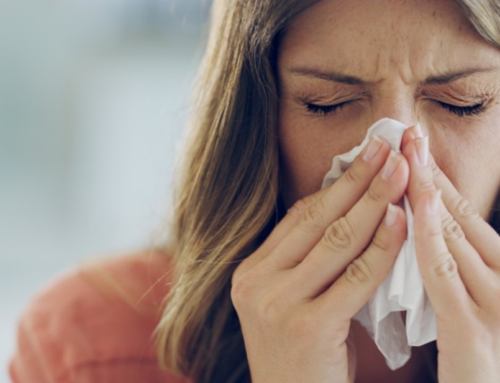Milliyet Newspaper – June 02, 2021
With the warming of the weather, sun allergies began to show themselves. President of Allergy and Asthma Society Prof. Dr. Ahmet Akçay gave information about the sun allergy caused by the body’s extreme sensitivity to the sun’s rays.
It is more common in women. The incidence is slightly higher in atopic people who are prone to allergies. The probability of co-occurrence of solar urticaria with other types of chronic urticaria is 16%. How sun allergy develops is not fully understood. It is an immediate hypersensitivity reaction that occurs after sun exposure, which may be IgE-mediated.
One hypothesis put forward in the development of solar urticaria is as follows: “Sun rays activate an endogenous substance called chromophore, which can be found in serum or on our skin, turning it into an immunologically active photo-allergen. This then triggers the release of chemicals from the allergy-causing mast cells, causing the hives lesions.” Irradiated injection of a person’s own serum with sun allergy is also found to be consistent with this hypothesis since it causes allergies on the skin.
Sometimes, solar urticaria is triggered by certain medications. Some cholesterol-lowering drugs (such as Atorvastatin), some drugs used as antipsychotics (chlorpromazine), some antibiotics (such as tetracycline), or birth control pills can trigger sun allergy.
Exposure to sunlight after the use of perfumes, disinfectants, dyes or other chemicals can also cause sun allergy.
What are the symptoms of sun allergy?
A few minutes after exposure to sunlight, on sun-exposed areas:
-Redness,
-Combustion,
– Symptoms in the form of edematous swellings are seen.
Sun allergy can also develop in areas covered with thin, white clothing that allow the sun’s rays to reach the underlying skin. Allergy can also occur around the eyes or on the lips. Skin under clothing usually reacts more severely to sun exposure. The face and hands are more tolerant as they are frequently exposed to the sun.
Serious allergy symptoms such as nausea, wheezing, shortness of breath or fainting may also occur, especially if large areas of the skin are exposed to sunlight for a long time. However, allergic shock rarely develops, even with severe allergy symptoms.
Skin manifestations begin to improve within one hour of cessation of sun exposure in 75% of cases and completely resolve within 24 hours. The severity and duration of symptoms can also vary with the intensity of the light.
The information obtained from the patient is very important in the diagnosis of sun allergy. It is important to have temporary hives that occur a few minutes after exposure to sunlight. Examination findings are normal when not exposed to the sun.
The clinical findings are important in the diagnosis of solar urticaria, and the diagnosis can be confirmed by phototesting. The phototest looks at how and at what dose your skin reacts to UV light from a sun lamp of different wavelengths. The wavelength to which your skin reacts can help identify your particular sun allergy.
Photopatch testing may be useful to rule out drug-induced photosensitivity or photocontact dermatitis. The patch test, called photopatch, involves putting different substances known to trigger allergies on your skin, waiting a day, and then exposing your skin to UV radiation from a sun lamp. If your skin reacts to a certain substance, it may be what triggers solar urticaria.
There are no guidelines for the treatment of solar urticaria. Different treatments have been used with varying success. Avoiding sun exposure using broad-spectrum sunscreens and dark clothing is logically recommended, as well as sun protection.
Antihistamines are the most commonly used drug as drug therapy. They can often provide relief but usually require higher doses. Antihistamines have no effect on the rash in solar urticaria. Lotions can be used to relieve redness and burning.
Phototherapy (UVA, UVB, visible light) and photochemotherapy (PUVA) can be used to improve tolerance to sunlight. This tolerance development process should be based on the spectrum of action and the minimum urticaria dose. PUVA appears to provide a more sustained response than phototherapy alone.
Solar urticaria is a mysterious disease that is not fully understood. Although the diagnosis is simple, the treatment is difficult. Solar urticaria usually develops in the thirties and becomes a chronic disease. Not all patients may improve with treatment.
The probability of spontaneous recovery was estimated to be 15% at 5 years after the onset of sun allergy and 25% after 10 years. In general, patients with severe urticaria are unlikely to improve. Many patients are confined indoors and have a poor quality of life.
Since solar urticaria is thought to be caused by a type 1 hypersensitivity reaction, severe episodes of solar urticaria can lead to fainting spells, shortness of breath, and even severe allergy symptoms.
Ways To Avoid Sun Allergy
Limit your sun exposure and stay out of the sun, especially between 10:00 and 16:00 when the sun is strongest.
If your rash is related to a certain medication, contact your allergist.
Wear closely woven clothing with maximum protection, such as long sleeves, long pants, or long skirts.
Consider wearing clothing with a UPF protection factor of over 40 that blocks the UV protection factor better than sunscreens.
Apply a broad-spectrum sunscreen to exposed skin and reapply regularly.
Wear sunglasses and a wide-brimmed hat when outside; use a parasol.






